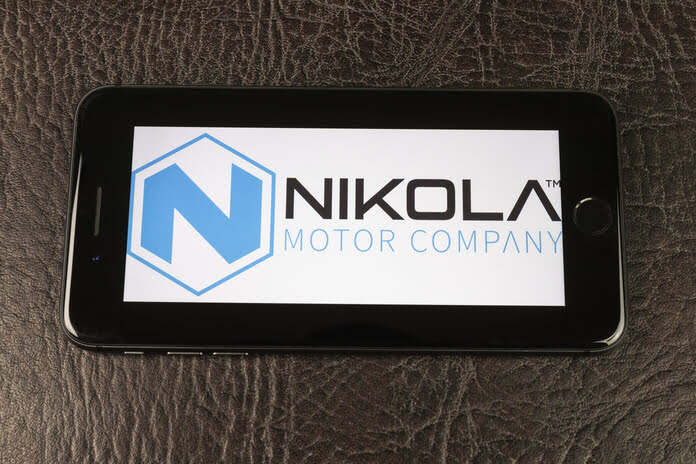The share price of Nikola Corporation (NASDAQ:NKLA), one of the most popular IPOs of the 2020 mania, is currently more than 70 times below all-time highs. However, my study shows that such a significant selloff was fair, despite the temptation that some investors may feel to buy the dip. NKLA is currently in a very challenging situation with only enough cash to cover operations for the upcoming quarter since it is unable to keep up with its long-term ambitions.
About Nikola
Nikola develops and produces cutting-edge goods and services for the transportation sector. The business’s main office is in Phoenix, Arizona. The two business divisions of NKLA are truck and energy. The Truck business unit is developing and commercializing battery electric cars (BEV) and hydrogen fuel cell electric vehicles (FCEV), according to the company’s most recent 10-K filing. In order to fulfill expected fuel demand from FCEV and BEV customers as well as other third-party clients, the Energy business unit is concentrated on creating a hydrogen fueling environment and supporting BEV charging. In June 2020, the company went public.
The fiscal year of NKLA, which has a single operating and reportable segment, concludes on December 31.
Financials
Because Nikola only recently went public, there isn’t much past financial data to examine. Despite having begun earning income in FY 2022, the company is still very far from becoming profitable. However, compared to the top line, the cost of revenue was more than three times higher. The corporation has spent about $800 million on SG&A costs, which was significantly more than in previous years, to drive first sales.
During the Q4 2021 earnings call, the previous CEO, Mark Russell, revealed the guidance for FY 2022 and pledged to deliver between 300 and 500 trucks with annual sales of at least $90 million. The company shipped more than twice as little as the lower edge of the projection, according to the 10-K report for the entire FY 2022. For me, such a glaring underperformance raises the suspicion that there may be issues with either the planning or the execution, or perhaps even both.
The speed of the company’s asset implosion, in my opinion, is a major warning sign. The business is undoubtedly still in its infancy. However, the company’s cash reserves are decreasing, and I think there is a very strong likelihood that it will need to raise more money. Inventory that is growing too quickly harms liquidity and its prospects.
The business’s CFO, Stasy Pasterick, stated on the most recent earnings call that the company is close to attaining a planned quarterly cash burn rate of $150 million. As a result, the outstanding cash balance as of March 31 was $30 million less than this target. If NKLA wishes to be in business, the corporation must act quickly to concentrate on reducing cash burn. Cost-cutting will reportedly harm marketing and R&D efforts, which will ostensibly harm the company’s long-term prospects.
The pause in the production of BEVs is another warning sign, in my opinion. Nikola has a “sufficient inventory of battery electric trucks for customers,” according to CEO Michael Lohscheller. It implies that management is taking action to increase working capital, indicating that working capital management has been subpar during the past few quarters. It also suggests, in my opinion, that the demand for BEVs is slowing down more quickly than management anticipated. It is essential to show extraordinary management and capital allocation for a young company to survive with its limited resources and accessible liquidity. Furthermore, the overproduction of BEVs is hardly a managerial feat of distinction.
Overall, the company is in a very precarious financial condition, and I do not think the future looks promising. Nikola’s performance history is not one of success, but one of underperformance.
Valuation
Nikola has extremely little free cash flow and no earnings, thus I used the Discounted Cash Flows [DCF] approach for value. I round Gurufocus’ WACC up to 10% because I like to make conservative assumptions. Here, predicting future FCFs for the NKLA is the difficult part. We have a great deal of uncertainty in this situation since, as we can see from the “Financials” section, the company is a long way from producing profits and positive FCF. I take consensus revenue projections for the optimistic case scenario and, using my best judgment, apply FCF margins and timeliness.
As we can see from the calculations above, the optimistic scenario estimates the company’s fair value to be $5.51 billion, which implies significant upside potential for the stock. DCF does however occasionally lie, especially when presumptions seem to be far from reality.
Since NKLA’s historical operating performance does not provide us with any proof that the company would be able to generate sixteen-fold revenue growth over the next 48 months, I am absolutely certain that sales growth projections are simply too optimistic. A less aggressive revenue scenario is what I would like to simulate, even though a 30% CAGR is also considered to be ambitious. In this instance, I don’t think the business will achieve financial parity until FY 2032.
I think that during the next ten years, the less extreme scenario above is much more likely to come to pass. We can see that, based on these hypotheses, NKLA’s operations cost far less than the company’s market capitalization. However, we must keep in mind that the prospects for NKLA are highly questionable.
Overall, I think that given the company’s track record of not achieving objectives within the initially anticipated timeline, we should consider a less aggressive scenario. My analysis indicates that the stock is significantly expensive even in the case of moderate revenue growth.
Important Risks to Take Into Account
It is quite dangerous to invest in a business that is still very distant from becoming lucrative. As we can see from the financial analysis above, NKLA is a cash guzzler with seriously declining liquidity. The risk of a business like NKLA continuing to operate is always high. Equity investors will be hurt by any alternatives to raise additional funding, either by declining cash flows with increased debt loads or diluting by issuing new shares.
The sustainable energy transportation industry is also experiencing an increase in competition. The world leader in EV trucks, Volvo, shipped 683 of them in the first quarter of 2023, representing a 254% YoY gain. Six months ago, Tesla, the undeniable industry leader in EVs overall with a strong brand, started shipping its Tesla Semi vehicle. According to speculations, Pepsi alone intends to release over 100 Semis in 2023. It will be difficult for NKLA to compete with these two giants because they have far more resources than the company does to keep making such large investments in R&D.
The inherent dangers of using hydrogen energy are last but not least among the important risks. Since hydrogen is extremely flammable, any potential accident using equipment or transportation vehicles fueled by hydrogen will do serious harm to the reputation of businesses producing hydrogen energy. This may result in a loss of clients who would rather move to energy sources that have a longer track record of safety.
To Sum Up
In conclusion, considering its precarious financial situation and dismal performance over the previous quarters, Nikola stock is a strong sell. I believe that the corporation wasted money that was raised during its incredibly successful IPO by failing to deploy it wisely. Further evidence that the stock is expensive comes from my valuation, which uses moderately optimistic growth assumptions.
Featured Image: Megapixl









